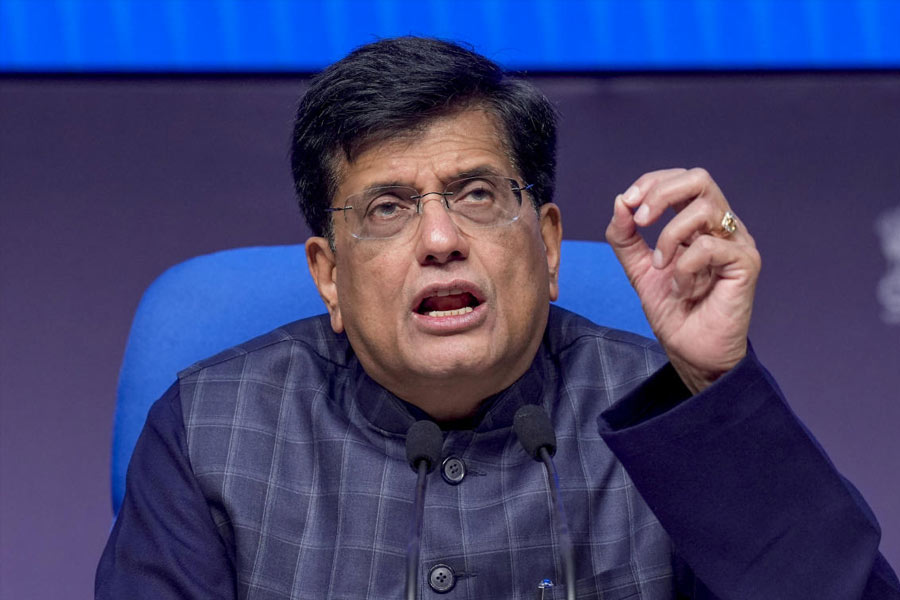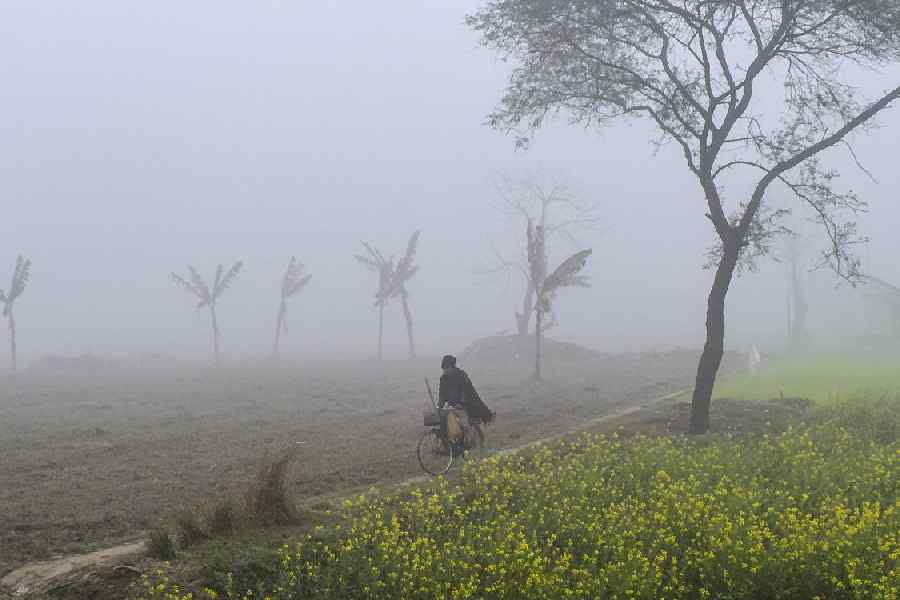
Raja Ram Singh, Mohammed Shamsher and Ram Lakshman Sharma at Baragaon village, about half a kilometre from the Nalanda ruins; Kalimuddin who runs a tailoring shop
in the village. Pictures by Imran Ahmed Siddiqui
Meat is the fibre that holds and a tailor the thread that stitches communities together in these tumultuous times at Baragaon, which has just two Muslim families and 800 Hindu households.
Mohammed Shamsher runs a goat meat shop here, which caters to everybody in town. Almost all his customers are Hindus from the village, barely 500m from the ruins of Nalanda, the iconic Buddhist seat of learning, around a 100km from Patna.
The sense of togetherness among Hindus and Muslims shines bright in this dusty village, which has several Buddhist structures and Jain temples. "We are also meat eaters. Can anyone change our food habits," asks 68-year-old Raja Ram Singh, who belongs to the powerful landed upper caste Bhumihar community. The Dadri incident, in which a Muslim was lynched on suspicion of consuming beef, he said, was very unfortunate. "Bahut bura hua (what happened was terrible)," said Raja, the richest man in the village with 105 bighas of land. "This is all politics and will end after the elections."
Baragaon, he said, has always been an example of communal amity. Pointing out at the rich historical legacy of the place, he said most of India's major religions were represented here, be it Buddhism, Jainism or Hinduism.
"We have always believed in co-existence and take care of the two Muslim families who have chosen to stay amidst us. We all live like a family here and have respect for each others' religious beliefs and food habits. We also take extra care to ensure they (Muslims) don't feel insecure living amid Hindus," he said.
Numerically, Bhumihars and Rajputs dominate the village. Then there are Brahmins and backward castes like Yadavs, Koeris, Kurmis, Kohars and Dalits. Most residents here depend on agriculture. The Bhumihars are landlords with large agriculture fields. Others have small land holdings and many of them work as casual labourers on farmland.
Shamsher's family has been living in the village for the past five decades after his father decided to shift base to find work as a farm hand. The other Muslim family is Shamsher's niece Kalimuddin, who has a tailoring shop in the village.
"Hindus are totally dependent on both Shamsher and Kalimuddin, as we buy goat meat from one and get our clothes stitched from the other," said Rana Ram Singh (in his late 40s) who works in a private firm in Patna.
According to him many elderly people in the village are vegetarian but the younger generations cannot do without chicken or mutton. "In our house we have separate utensils to cook vegetarian food for our parents, and we also cook meat. My parents never had a problem with my food habits. Our food habits co-exist under the same roof," he said.
Another resident, Rajesh Kumar Yadav, said: "Because of Shamsher we do not have to go to the local market, which is 3km away, to buy meat. He also eats vegetables the Hindu farmers grow. Why can't then we live together peacefully," he asks.
Shamsher (50) said Hindus are very "kind and generous" towards him and his niece. "It's because of their love and warmth we never thought of leaving this village. We could have shifted to nearby Begumpur village, where Muslims are in majority, but did not."
Has he ever felt insecure? "I was a bit scared after what happened in Dadri. But the Hindus here are very kind and always protect us," he said. He recounted how his family had once stayed at Raja Ram Singh's house for a month during the Biharsharif riots in 1981. "Realising that some people might from adjoining villages might create problems for us, Ram Singhji took us to his house where we stayed for a month. We were treated like his own family members," he said.
Even now, such is the bonding that Hindus gifted clothes to his children during Dussehra. "We always celebrate each others' festivals together. I treat them to sewaiyan (vermicelli) and biryani and they send us boxes of sweets during Holi," said Samsher, the father of 10 children, five from each of his two wives. Close by, Kalimuddin lives with his wife and four children. A row of newly stitched shirts and trousers hang at his shop. "I worked day and night to stitch clothes for so many Hindu brothers and their children for Dussehra," he said.
Ram Lakshman Sharma, a Brahmin who works as a clerk at a civil court in Biharsharif, blamed political parties for creating rift between communities. "Real development cannot come without communal amity. In this country, Hindus and Muslims have been living together for centuries and integrated neighbourhoods are the best protection for both communities," he said.
The region is an exception to the trend of Muslim-only and Hindu-only villages, which emerged after the 2013 Muzaffarnagar riots.
But despite the strong bonding and unity, caste matters when it comes to voting. "Everyone knows Rajput, Bhumihars and Brahmins will vote for the BJP while most members of backward castes are supporters of Nitish Kumar and Lalu Prasad. It's a matter of one's choice," said Sharma. But he is an exception. "I will vote for Nitish for the development work, like better roads and electricity, he has carried out in the state. I think it will be a betrayal if I don't vote for him."
Who has a better chance to form the government - the NDA or the Grand Alliance? "Nobody can guess it. People here are very shrewd. They say something but when they get the ballot papers they go by their instinct."
"Isi wajah se to media ka exit polls galat hota hai (This is why the media get exit polls all wrong)."
Nalanda voted on October 28










